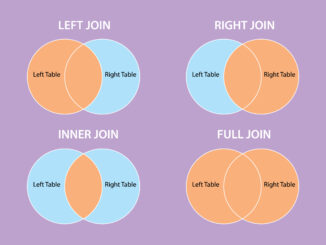Connecting ClickHouse® to Apache Kafka®: A Complete Technical Guide
Introduction
Apache Kafka and ClickHouse form a powerful combination for real-time analytics and data processing. ClickHouse, a high-performance columnar database, excels at analytical workloads, while Kafka provides robust streaming capabilities for handling large volumes of data. This guide explores the various methods to connect these technologies and implement efficient data pipelines.
Why Connect ClickHouse to Kafka?
The integration between ClickHouse and Kafka enables organizations to:
- Process streaming data in real-time for immediate analytics insights
- Build fault-tolerant data pipelines with Kafka’s durability guarantees
- Scale analytics workloads using ClickHouse’s columnar storage efficiency
- Implement event-driven architectures for modern data applications
Integration Methods Overview
There are several approaches to connect ClickHouse with Kafka, each with distinct advantages:
1. Kafka Table Engine (Self-hosted ClickHouse)
The Kafka table engine is the most popular open-source method for self-hosted ClickHouse deployments. This engine allows ClickHouse to read directly from Kafka topics and works seamlessly with Apache Kafka.
Key Features:
- Direct integration within ClickHouse
- Real-time data consumption
- Built-in fault tolerance
- Configurable consumer groups
2. ClickPipes (ClickHouse Cloud)
For ClickHouse Cloud users, ClickPipes is the recommended approach for streaming Kafka data. This native solution provides high-performance insertion while maintaining separation of concerns between ingestion and cluster resources.
3. Kafka Connect
Kafka Connect serves as a centralized data hub for integration between Kafka and other data systems. The ClickHouse Kafka Connect Sink delivers data from Kafka topics to ClickHouse tables.
4. Vector Pipeline
Vector provides a vendor-agnostic data pipeline solution with the ability to read from Kafka and send data to ClickHouse.
Implementing the Kafka Table Engine
Basic Table Creation
Here’s how to create a Kafka table in ClickHouse:
CREATE TABLE kafka_table (
timestamp DateTime,
user_id UInt64,
event_type String,
properties String
) ENGINE = Kafka
SETTINGS
kafka_broker_list = 'localhost:9092',
kafka_topic_list = 'user_events',
kafka_group_name = 'clickhouse_consumer_group',
kafka_format = 'JSONEachRow',
kafka_num_consumers = 2;
Required Parameters
The Kafka engine requires these essential parameters:
- kafka_broker_list: Comma-separated list of brokers (e.g., localhost:9092)
- kafka_topic_list: List of Kafka topics to consume
- kafka_group_name: Consumer group name for tracking reading margins
- kafka_format: Message format (JSONEachRow, CSV, etc.)
Optional Configuration Parameters
Advanced configurations include:
CREATE TABLE advanced_kafka_table (
id UInt64,
data String,
created_at DateTime
) ENGINE = Kafka
SETTINGS
kafka_broker_list = 'localhost:9092',
kafka_topic_list = 'events',
kafka_group_name = 'advanced_group',
kafka_format = 'JSONEachRow',
kafka_security_protocol = 'sasl_ssl',
kafka_sasl_mechanism = 'SCRAM-SHA-256',
kafka_sasl_username = 'username',
kafka_sasl_password = 'password',
kafka_num_consumers = 4,
kafka_max_block_size = 65536,
kafka_skip_broken_messages = 10,
kafka_commit_every_batch = 1,
kafka_poll_timeout_ms = 5000,
kafka_thread_per_consumer = 1;
Setting Up Data Ingestion Pipeline
Step 1: Create Kafka Table
CREATE TABLE kafka_raw (
raw_data String
) ENGINE = Kafka
SETTINGS
kafka_broker_list = 'localhost:9092',
kafka_topic_list = 'raw_events',
kafka_group_name = 'clickhouse_raw',
kafka_format = 'JSONAsString';
Step 2: Create Target MergeTree Table
CREATE TABLE events_final (
event_id UInt64,
user_id UInt64,
event_type String,
timestamp DateTime,
properties Map(String, String)
) ENGINE = MergeTree()
ORDER BY (timestamp, user_id)
PARTITION BY toYYYYMM(timestamp);
Step 3: Create Materialized View
CREATE MATERIALIZED VIEW kafka_to_events TO events_final AS
SELECT
JSONExtractUInt(raw_data, 'event_id') as event_id,
JSONExtractUInt(raw_data, 'user_id') as user_id,
JSONExtractString(raw_data, 'event_type') as event_type,
parseDateTimeBestEffort(JSONExtractString(raw_data, 'timestamp')) as timestamp,
JSONExtract(raw_data, 'properties', 'Map(String, String)') as properties
FROM kafka_raw;
Using Named Collections for Configuration
Named collections provide a cleaner way to manage Kafka configurations:
Configuration File Setup
<clickhouse>
<named_collections>
<kafka_cluster>
<kafka_broker_list>broker1:9092,broker2:9092</kafka_broker_list>
<kafka_security_protocol>sasl_ssl</kafka_security_protocol>
<kafka_sasl_mechanism>SCRAM-SHA-256</kafka_sasl_mechanism>
<kafka_sasl_username>username</kafka_sasl_username>
<kafka_sasl_password>password</kafka_sasl_password>
</kafka_cluster>
</named_collections>
</clickhouse>
Using Named Collections in Table Creation
CREATE TABLE kafka_with_named_collection (
data String
) ENGINE = Kafka(kafka_cluster)
SETTINGS
kafka_topic_list = 'events',
kafka_group_name = 'named_collection_group',
kafka_format = 'JSONEachRow';
Performance Optimization
Consumer Configuration
- kafka_num_consumers: Set based on topic partitions and server cores
- kafka_max_block_size: Optimize batch sizes for throughput
- kafka_thread_per_consumer: Enable parallel processing
Resource Management
The Kafka table engine utilizes ClickHouse resources directly, using threads for consumers. Consider this resource pressure when planning your deployment.
Monitoring and Error Handling
-- Enable error handling mode
CREATE TABLE kafka_with_errors (
data String,
_error String,
_raw_message String
) ENGINE = Kafka
SETTINGS
kafka_broker_list = 'localhost:9092',
kafka_topic_list = 'events',
kafka_group_name = 'error_handling_group',
kafka_format = 'JSONEachRow',
kafka_handle_error_mode = 'stream',
kafka_skip_broken_messages = 100;
Best Practices
1. Schema Design
- Use appropriate data types for optimal compression
- Implement proper partitioning strategies
- Consider TTL policies for data retention
2. Security Configuration
- Always use SSL/SASL for production environments
- Implement proper authentication mechanisms
- Secure credential management
3. Monitoring
- Track consumer lag and throughput
- Monitor ClickHouse resource utilization
- Set up alerting for failed message processing
4. Scaling Considerations
- Balance consumers with topic partitions
- Monitor memory usage and adjust block sizes
- Consider horizontal scaling for high-volume scenarios
Troubleshooting Common Issues
Connection Problems
- Verify broker connectivity and authentication
- Check firewall and network configurations
- Validate SSL certificates and SASL credentials
Performance Issues
- Adjust consumer count and batch sizes
- Monitor resource utilization
- Optimize table schemas and indexes
Data Quality
- Implement proper error handling
- Use schema validation
- Monitor broken message counts
Conclusion
Connecting ClickHouse to Apache Kafka opens up powerful possibilities for real-time analytics and streaming data processing. Whether using the native Kafka table engine for self-hosted deployments or ClickPipes for cloud environments, the integration provides robust, scalable solutions for modern data architectures.
The key to success lies in proper configuration, monitoring, and optimization based on your specific use case requirements. Start with basic configurations and gradually optimize based on performance metrics and business needs.
By following the patterns and best practices outlined in this guide, you can build efficient, reliable data pipelines that leverage the strengths of both ClickHouse and Kafka for your analytics workloads.
Further Reading:
- What’s a Data Lake For My Open Source ClickHouse® Stack
- ColumnStore vs. Modern Data Warehousing
- Data Compression in ClickHouse for Performance and Scalability
- Inverted Indexes in ClickHouse
- Building Multi-Tenant ClickHouse Clusters
- Integrating Kafka with ClickHouse
You might also like:
- ClickHouse March 2023 Release – Version 23.3
- Using ClickHouse-Backup for Comprehensive ClickHouse® Backup and Restore Operations
- Best Practices for ClickHouse’s Role Based Access Control
- bare-metal.io – Run analytical workloads for one-fourth of the AWS costs
- ClickHouse Troubleshooting: Deep Dive into ClickHouse Wait Events


